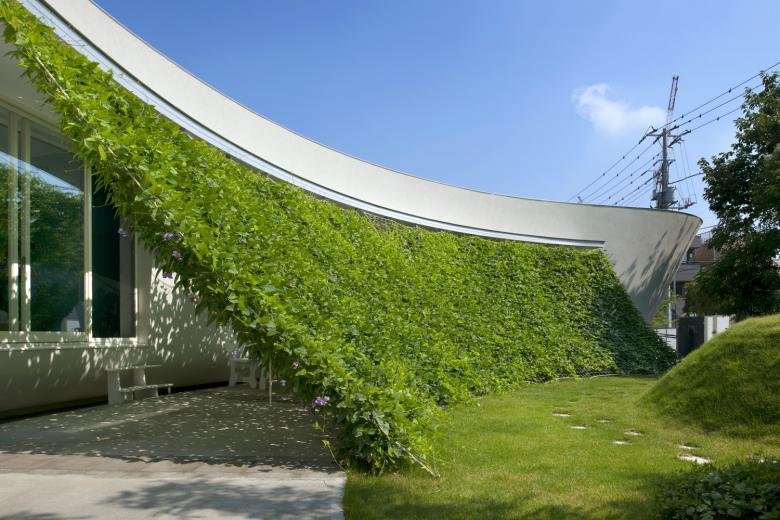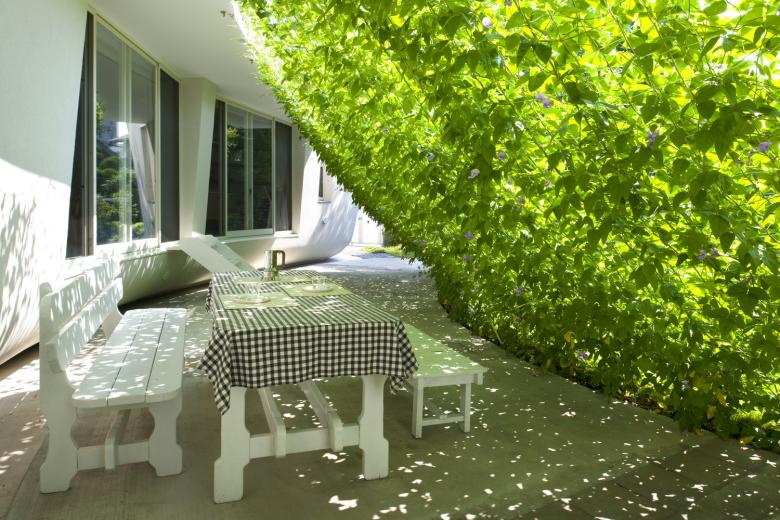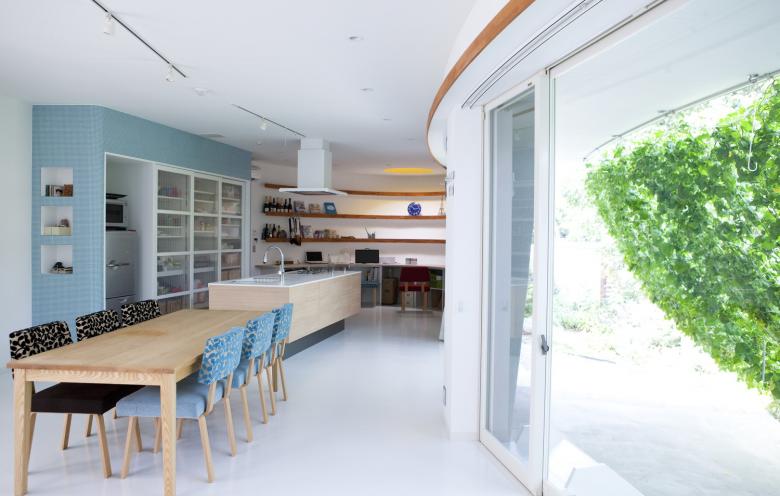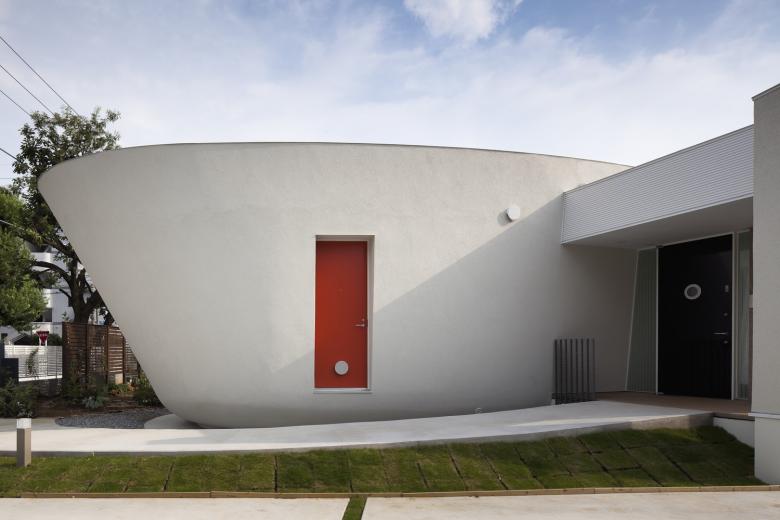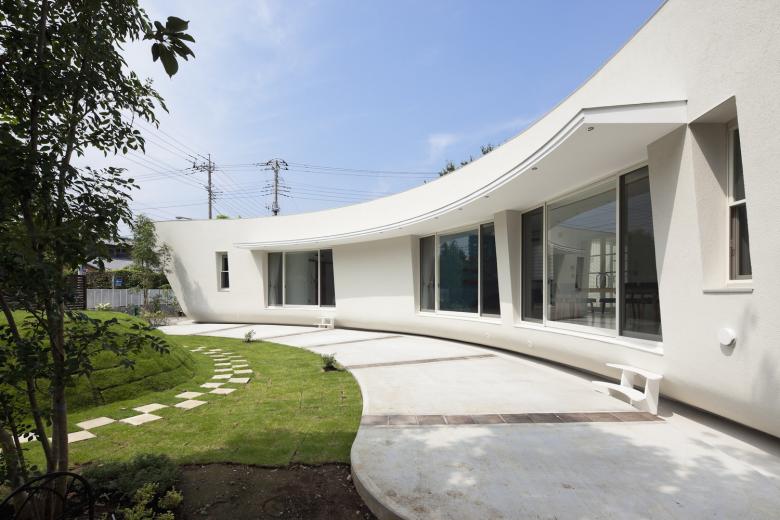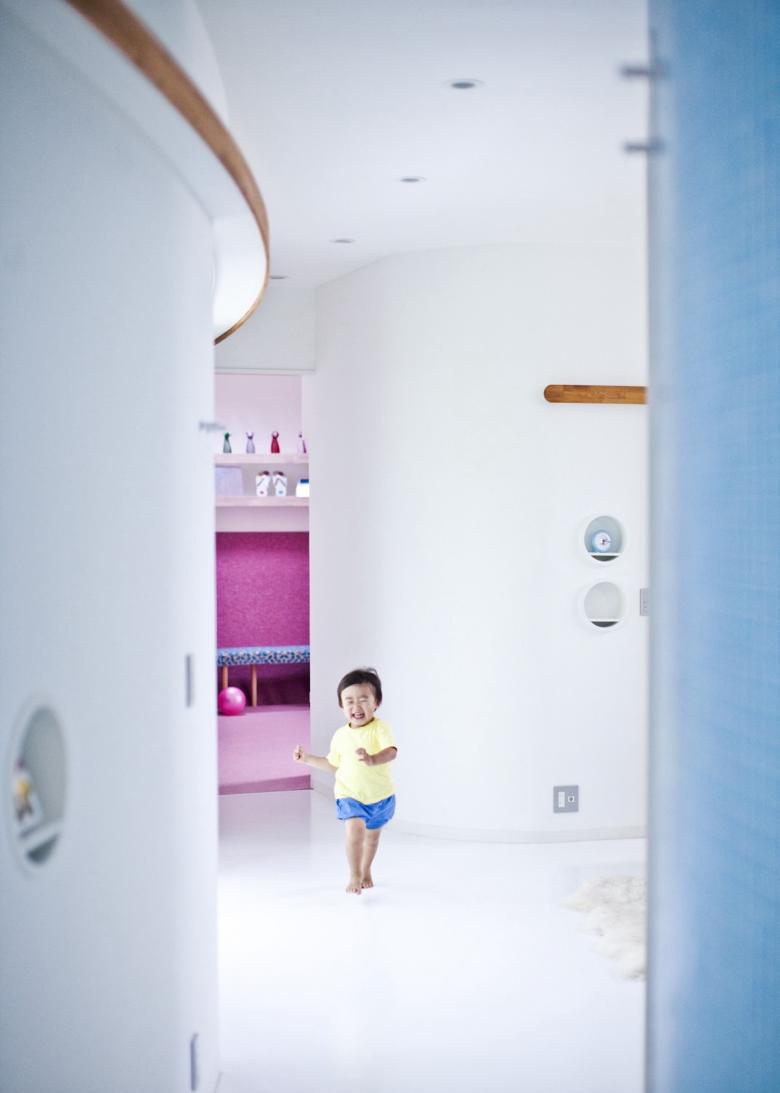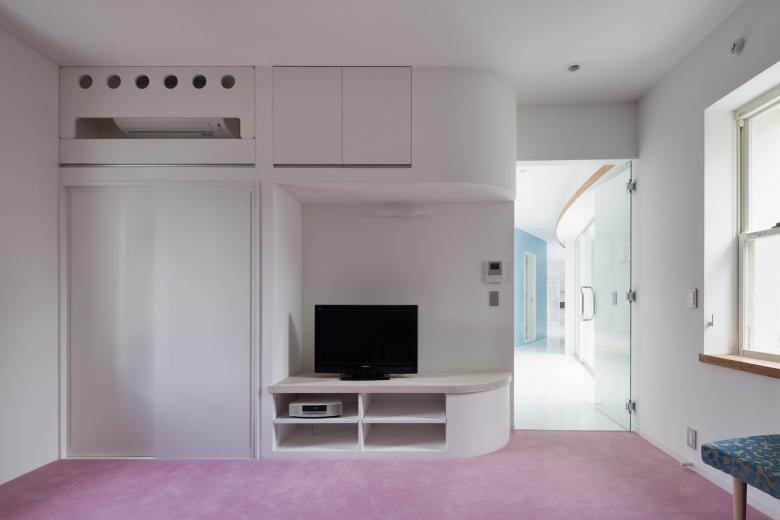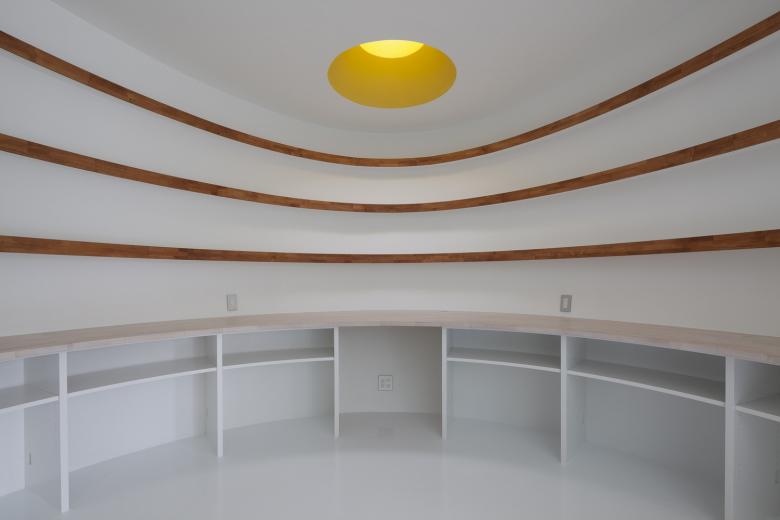Green Screen House
Saitama, Japan
We approached this residential design project from the home's relationship to the neighborhood and yard, and also sought an optimal connection with the imaginative spaces inside.
First, we considered an overall arrangement that would allow local residents – who had once enjoyed a field of roses here – to continue to stop and smell the roses and enjoy the greenery as they passed by a house with the same inviting sense of place.
Mountain cherry trees by the street were left intact, and a new rose trellis is positioned at the boundary of the street and the yard. Breezes drawn into the yard protect the greenery from pests, thanks to this arrangement of the yard and building.
A patio shade of greenery guides cool breezes into the house, and through careful planning, the curved building facilitates ventilation into and within the interior.
■ Creating non-wall partitions from wall curvature
Inside, curving walls are designed to block line of sight while forming an uninterrupted space where all four family members remain aware of each other. Though visually partitioned by this curvature, each room actually flows into the next, so that family members are always connected through a subtle awareness of each other's voice or presence. The curving walls also keep bedrooms and other areas private when guests arrive.
Capitalizing on how we mentally organize space
In rooms formed by straight walls, we tend to partition the area mentally based on our impression of how it is used. Imagine a rectangular room with a desk and other furniture lined up along one wall. Psychologically, we tend to divide the room into perceived zones for a pathway and each piece of furniture.
In curved rooms, however, it is harder to imagine a distinct pathway, and we recognize the space as forming an organic whole.
We sought to design a house where curved walls weaken this tendency to imagine separate zones – where each zone seems more integral to the whole, two zones seem like a single area, and no distinct pathway is discernible, which affords a more holistic sense of the space.
Adding to this, the patio shade of greenery evokes an array of spatial perceptions and makes rooms feel more spacious, as if somehow incorporating this outside area. To me, this is another effect of curved walls weakening our impulse to mentally partition spaces.
